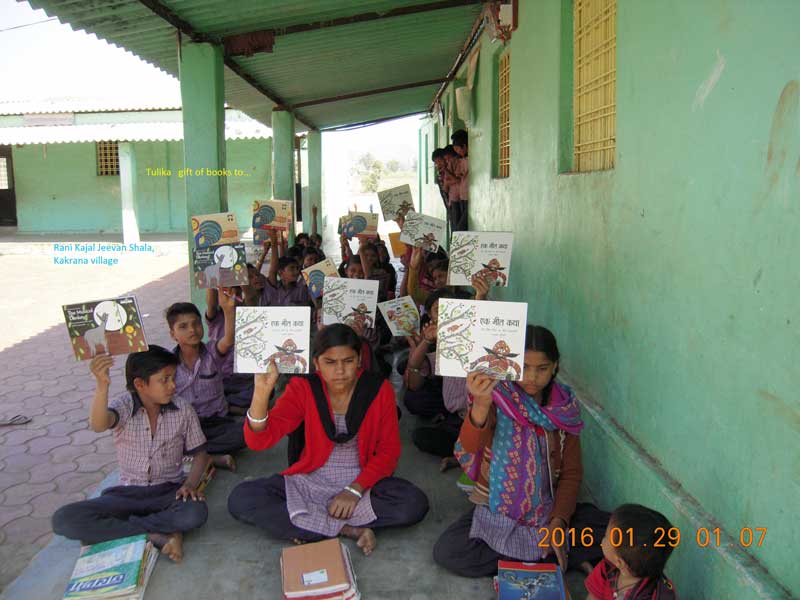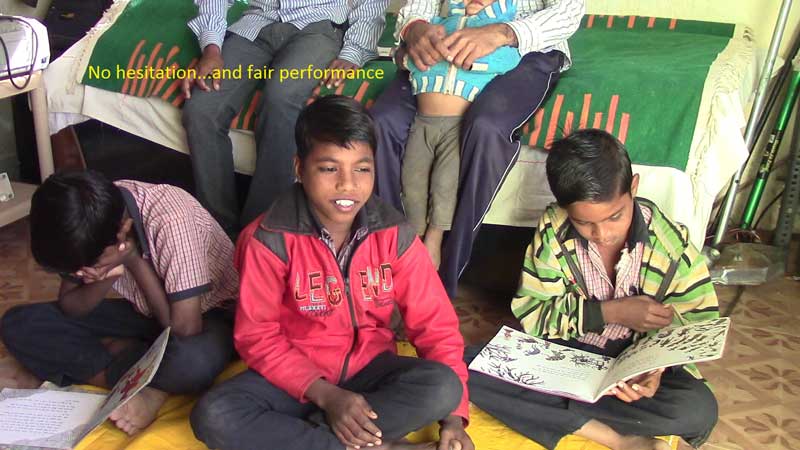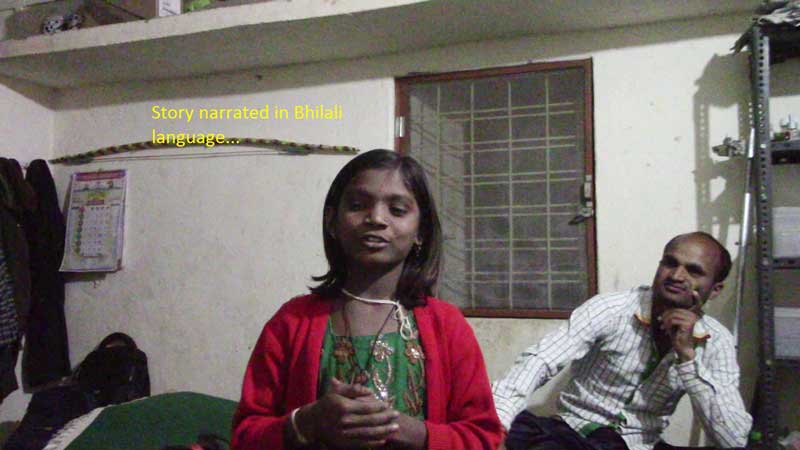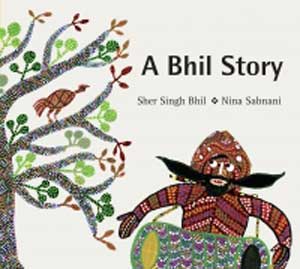
Tulika’s storybooks were very well received by the students at Kakrana’s Rani Kajal Jeevan Shala (village school). They enjoyed reading them and even understood the stories. They made a considerable impact on both teachers and students and opened the window to the school for pedagogic exercise.
Testing reading competence and the level of understanding
The teachers decided to try the storybooks out on students of 3rd and 4th class. Several days after distributing all the books in Hindi before a dozen pupils were tested in the presence of their teachers. This included retelling the stories correctly in their mother tongue for assessing their understanding.
We are aware of the need of teaching its students in their mother tongues (Bhili, Bhilali). They were asked to make a special effort in narrating these stories to each other and their relatives and friends back in their village during vacations. At present few pronounce and understand the English versions of thestorybooks yet.
A sample of 4-6 students from each of the three classes (3,4 and 5) took the following tests:
1. Fluency of reading
Nearly all were very fluent in reading the book given to the students. In fact a few of them had even learnt by heart the entire text. To to check if the fluency was due to repeated reading that was needed to memorize the text they were asked to also read a book that was not given earlier.

It surely showed that in their first reading they were less fluent, but could read nearly correctly with a bit of faltering. In general, the reading skill was very good.
2. Meanings of a few words which are unlikely to be commonly used in conversation by them
Partly successful in sensing the meaning of new words. But not familiar with idioms yet. (Not tested exhaustively)
3. Skill at narrating the stories in Hindi without seeing the books
 This turned out to be very interesting. Three students chosen at random were fluent. But they had memorized the whole book!
This turned out to be very interesting. Three students chosen at random were fluent. But they had memorized the whole book!
Tell the story in simple conversational language this proved more difficult for all of them.
4. Skill in narrating the stories in their mother tongue in the presence of their teachers
This was a tough test for the classes chosen, namely to check if the narration correctly reflected the sense of the stories. One girl student’s accuracy was an exception, being very fluent even in her mother tongue according to her teacher. Others tried to translating the story the Hindi text from memory thereby expressing them haltingly in their mother tongue.

The difference between 4th and 5th class was not significant in this skill. But then the books were distributed to 5th class a day later than the other two classes.
Source: Report and photographs courtesy Swapan Bhattacharjee, Rani Kajal Jeevan Shala, Kakrana village, 2 Feburary 2016
Background information by Nina Sabnani on the making of “A Bhil Story”

Childhood | Bhil art and culture >>
A Bhil Story is a good book to use, to introduce a variety of environmental themes and concepts to young readers. Much like its art – small strokes and simple lines, combined to make a stunning whole – it underscores the powers of collective action to make a change in our lives, and the world around us.
Saffron Tree had also sent a few questions to Nina Sabnani on the making of A Bhil Story that she promptly answered:
The story is inspired by an origin myth recounted to us by the artists. They paint because it brings rain and therefore the act of painting is revered as a prayer, for a good and peaceful life and to honor the ancestors. …
Secondly, in our effort to collaborate we wanted an equal participation from the artist, to be able to tell us off if and when needed. Sher Singh was comfortable arguing, sharing and participating. We traveled with him to Jhabua, to all the places he holds dear and sacred and which then found their way into our visualization.
Source: www.saffrontree.org/2015/03/a-bhil-story.html
Narmada | States along the Narmada river (from source to the Arabian Sea):
Madhya Pradesh | Maharashtra | Gujarat
Explore India’s tribal cultural heritage with the help of another interactive map >>